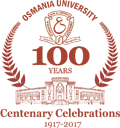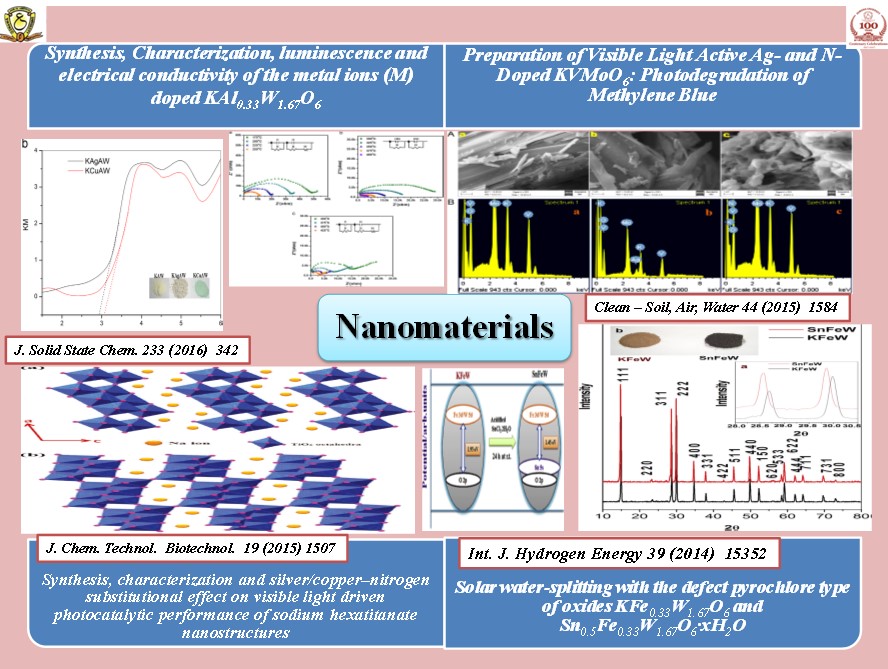



Thrust Areas of Research recognized by funding agencies. SAP, DST-FIST, CSIR, DST, DBT UGC-MJRP, UGC-CPEPA
Nitrogen Heterocycles: Synthesis of novel quinazolinone, benzimidazole, piperazine, azaindole based heterocycles using Click, Baylis-Hillman, Suzuki coupling reactions, other simple methods and study their antimicrobial and anticancer activities , their interaction with DNA.
Design and Synthesis of bioactive azaheterocycle linked peptides, bisaza heterocycles. their bioactive studies, DNA interactive studies, docking studies will be undertaken.
Oxygen Heterocycles: Synthesis of novel chromone, coumarin, oxadiazole based oxaheterocycles, to study their antimicrobial activities, docking studies.
Design and Synthesis of novel bioactive oxygen heterocycles and their antimicrobial, antifeedant, docking studies will be undertaken.
Isolation of Natural products: Isolation of new natural products from plants collected from the forest of A.P., which are known for their antifeedant and medicinal activity.
Synthesis and structural studies of transition metal complexes derived from biologically active organic ligands. Study of the magnetic properties of nanoparticles like cu-cd ferrites. Synthesis and structural studies of bioactive benzimidazole ligand based 3d- transition metal complexes.
Preparation of redox mediator free Z-scheme or heterojunction photocatalytic system by combining an n-type and a p-type semiconductors by employing physical or chemical methods.
Construction of heterojunction/Z-scheme photocatalyst - preparative methods, and construction of stable systems for the fabrication of efficient composite photocatalyst systems.
Characterization of the above systems by Powder XRD, UV-visible DRS, SEM, FT-IR, Raman, TEM and Zeta potential measurements.
Verification of the type of electron transfer in the photocatalytic system to confirm whether it is Z-scheme or heterojunction.
Visible light induced photocatalytic reduction of CO2 on as prepared semiconductor oxides surfaces.
MolecularModeling - Structure Based (Receptor) and Ligand Based (QSAR)Studies in Drug Design.
Medicinal Chemistry: Experimental and computationalstudy of various signaling protein molecules.


Isolation of Natural products from plant materials of Coleus forskohli and Andrographis paniculata, and synthesised some semi synthetic analogues of respective natural products for their biological activity.
Isolation of forskolin from the roots of coleus forskohlii: From the air dried powder (10 kg) of Coleus forskohlii a final 99.5% pure forskolin (46 g) (0.4%) was obtained after a series of isolation and separation steps. Further 57 grams of forskohlin was isolated from Coleus forskohlii and some new semi synthetic analogues of forskohlin were synthesized from it.
Andrographis paniculata, the whole plant material was collected from different places denoted as site-1, site-2, site-3, site-2a and site-3a and isolated andrographolide in pure form and estimated by HPLC Analogues of Andrographolide were synthesised and evaluated for their bioactivity.